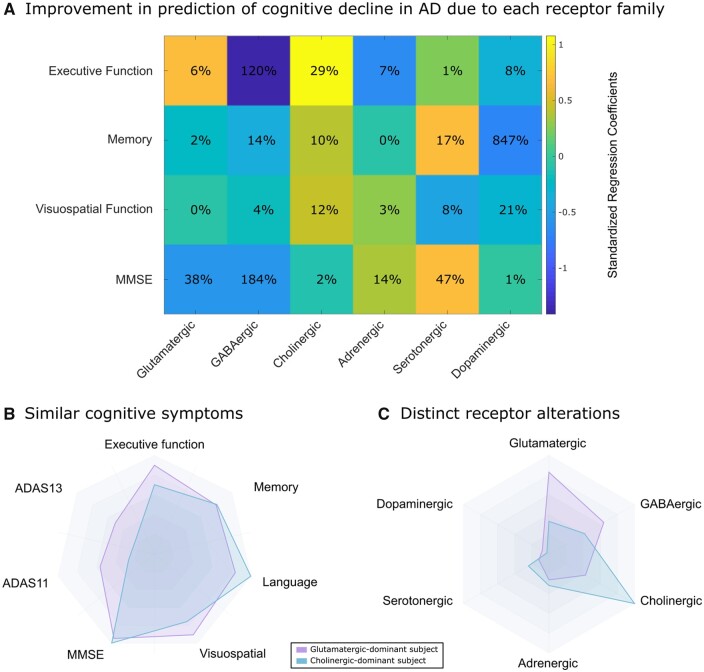Figure 6.
Receptor alterations underlying inter-individual disease heterogeneity. (A) In Alzheimer’s disease patients (n = 25), we quantified the relative effect sizes of standardized Mahalanobis distances of receptor mechanisms on different cognitive domains. We also standardized the regression coefficients within each cognitive domain before visualizing to facilitate comparison across cognitive domains, and the percentage improvement in model fit (R2) due to each receptor system is also shown. For example, the explanation of inter-subject variability in executive function decline by glutamatergic, cholinergic, adrenergic, serotonergic and dopaminergic Mahalanobis distances is improved by 120% (i.e. more than doubled) by the inclusion of GABAergic Mahalanobis distance as well. (B and C) We show two Alzheimer’s disease participants, with similar symptoms across a variety of cognitive domains. For these participants, we calculated the Mahalanobis distance to the distribution of all healthy subjects (n = 112), along mechanisms involving each receptor family. The subjects show distinct receptor alterations based on their longitudinal neuroimaging changes, despite their shared designation as Alzheimer’s disease patients and similar cognitive profiles.

